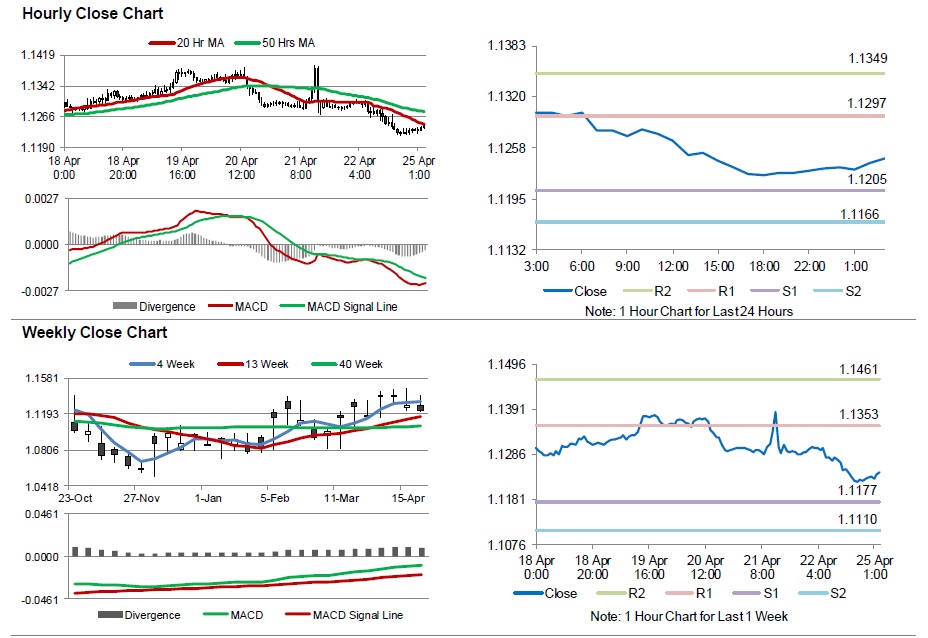For the 24 hours to 23:00 GMT, the EUR declined 0.58% against the USD and closed at 1.1226, following the release of downbeat PMI data in the Euro-zone, underlining concerns over the health of the region’s economy.
Data showed that the Euro-zone’s preliminary Markit manufacturing PMI unexpectedly declined to a level of 51.5 in April, compared to market expectations of an advance to a level of 51.9. The manufacturing PMI had registered a level of 51.6 in the previous month. Additionally, the region’s services PMI rose less-than-expected to a level of 53.2 in April, from a reading of 53.1 in the prior month. Markets were anticipating services PMI to climb to a level of 53.3. Meanwhile, in Germany, the flash Markit services PMI surprisingly fell to a six-month low level of 54.6 in April, compared to market expectations of it to remain steady at a reading of 55.1. On the other hand, the manufacturing PMI advanced more-than-expected to a level of 51.9 in April, compared to a reading of 50.7 in the prior month. Market expectation was for the manufacturing PMI to rise to a level of 51.0.
In the US, the preliminary Markit manufacturing PMI surprisingly fell to a six-and-a-half year low level of 50.8 in April, compared to a reading of 51.5 in the previous month. Investors had expected it to rise to a level of 52.0.
In the Asian session, at GMT0300, the pair is trading at 1.1244, with the EUR trading 0.16% higher from Friday’s close.
The pair is expected to find support at 1.1205, and a fall through could take it to the next support level of 1.1166. The pair is expected to find its first resistance at 1.1297, and a rise through could take it to the next resistance level of 1.1349.
Going ahead, market participants will look forward to the release of Germany’s IFO survey data for April, scheduled to release in a few hours. Moreover, US new home sales data for March, due later in the day, will also attract investor attention.
The currency pair is showing convergence with its 20 Hr moving average and is trading below its 50 Hr moving average.

